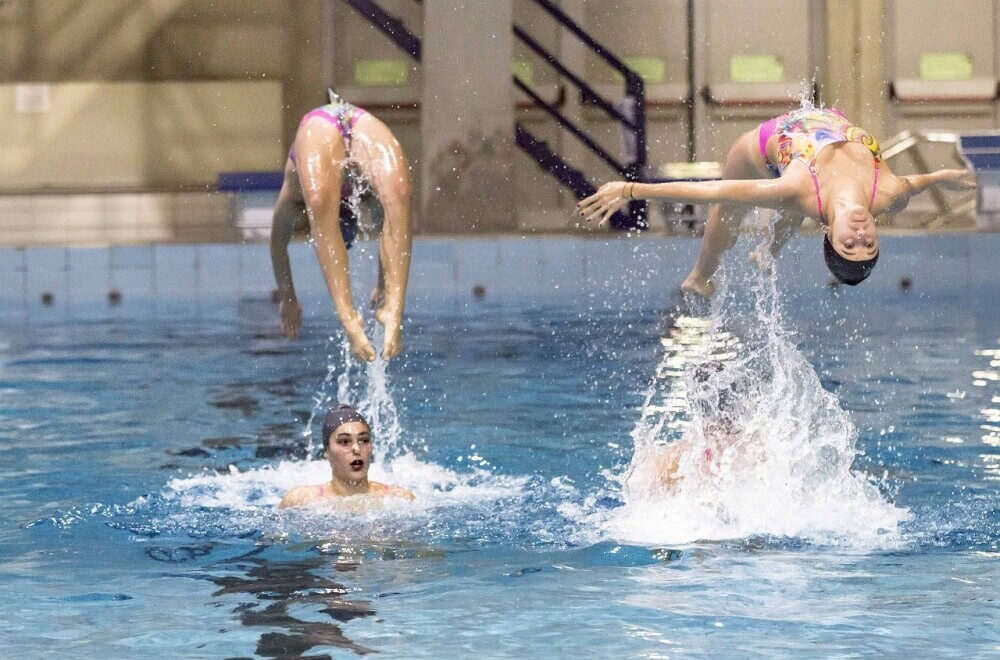Underwater swimming is more than holding your breath and moving through water. It’s an art form with a rich history and cultural significance around the world.

From ancient water rituals to modern synchronized swimming, this practice has captivated human imagination for centuries.
In underwater swimming, there’s a unique blend of beauty and grace. Imagine watching a dancer glide through a ballroom; that’s what skilled underwater swimmers look like in their aquatic stage.
The water becomes an extension of the body, enhancing fluid movements and creating an almost otherworldly gracefulness.
But underwater swimming is also rigorous. It is more than holding your breath and moving through water. It requires a blend of physical endurance, precision, and artistic expression.
Swimmers must train to control their bodies while honing their artistic skills, whether that’s through the choreography of a routine or capturing a powerful moment in an underwater photograph.
With all this, the artistry of underwater swimming becomes more than just a sport. It is a way to push the limits of human capability, to merge athleticism with creativity, crafting performances that inspire.
Mastering Underwater Swimming Techniques
Getting proficient at underwater swimming involves mastering a set of essential techniques that help integrate physical skills with artistic elements. Let’s start with the fundamental swimming strokes.
Each stroke, like the breaststroke or dolphin kick, has a specific role in creating momentum and conserving energy under the water. Choosing the right stroke for your routine can make all the difference in performance.
Breathing techniques are another crucial aspect. Learning how to manage air supply efficiently can extend the time you spend underwater, thus enhancing your practice or performance.
The key is to focus on steady, controlled breathing before submerging and maintaining calm when coming back up for air.
Turns and maneuvers are where creativity and skill really shine. A well-executed turn not only looks impressive but also sets the pace for your swim.
Understanding how to use the body’s movement in sync with water currents can add a dramatic flair to your tasks. Practice these maneuvers repeatedly to make them fluid and seamless.
To maximize your skill set, it’s essential to keep practicing and refining these techniques. A good start would be to analyze videos of successful swimmers or work with a coach to fine-tune your methods.
Combining discipline with creativity helps elevate underwater swimming from a skill to a captivating art form.

Tips for Enhancing Underwater Artistry
To truly excel, focusing on artistry is key. Body posture plays a significant role in achieving graceful movements. Keeping a relaxed yet controlled posture helps in maintaining balance and elegance. It’s about finding your center and letting your body flow naturally through the water.
Duration is another factor that contributes to better artistry. With practice, you can learn to stay submerged longer, which allows for more complex and expressive movements.
Techniques like practicing breath control on land and gradually increasing water time can make a big difference.
Visual storytelling is a powerful tool in creating underwater art. Think of how you can convey stories or emotions through movements. Integrating elements like rhythm and variation in speed can create engaging experiences for your audience. Each move should have intention, guiding the viewer through your aquatic narrative.
Expressing individuality is just as crucial. Personal style and creativity set you apart. Explore different forms, experiment with new techniques, and find those signature movements that define your underwater artistry.
Remember, confidence in your unique style brings authenticity to your performances.
Ensuring Safety and Overcoming Challenges
Safety should always be the top priority when practicing. Proper preparation and the right precautions can prevent accidents and enhance your overall experience.
Always swim in a controlled environment, whether that’s a pool or a supervised open water spot, and never swim alone. Having a buddy can ensure help is available if needed.
Common challenges in underwater swimming include dealing with water pressure, managing anxiety, and overcoming physical fatigue. Water pressure can affect your equilibrium, so it’s important to practice depth acclimation gradually.
Building mental resilience helps in managing anxiety, and this can be achieved through relaxation techniques such as visualization and meditation.
Overcoming physical fatigue involves a mix of regular exercise and mindful rest. Strengthening your core and lung capacity can significantly improve your stamina and performance. Remember to listen to your body and know when to take breaks.
Mental preparation is equally vital. Use visualization techniques to foresee the flow of your movements and calm any nerves. Resilience is developed by facing challenges head-on and learning from each underwater experience. This mindset not only helps in improving your skills but also enriches your connection with the water.
Conclusion | Underwater Swimming Art
Let’s recap:
- Underwater swimming is a dynamic blend of athleticism, artistry, and mental resilience.
- Whether you’re perfecting strokes, enhancing breath control, or refining artistic expression, this practice pushes the boundaries of human capability in a unique and beautiful way.
- By mastering essential techniques and cultivating individual creativity, swimmers can transform their time underwater into captivating performances.
- Always prioritize safety, build physical endurance, and embrace the mental challenges that come with underwater exploration.
- Ultimately, underwater swimming is more than just a sport—it’s an art form that allows you to merge body and water in graceful harmony, creating a world of endless possibilities.
This article, “Underwater Swimming Art | Techniques and Tips,” provides a foundational understanding of the artistry and techniques involved in underwater swimming.
I hope you found it both informative and inspiring. Feel free to share any comments or questions below—I’d love to hear your thoughts!
Veron Lee Campbell | Entrepreneur | The Way 4Word Enterprises